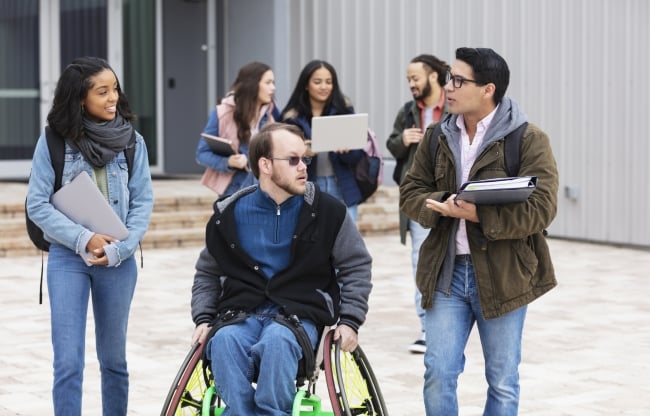
A new report from the American Council on Education offers analysis of different programs with proven evidence to have impacted students’ well-being, and those that are under evaluation.
You have / 5 articles left.
Sign up for a free account or log in.

To combat the student mental health crisis, higher education officials should consider evidence-based strategies at their institutions.
To address the student mental health crisis, colleges and universities have implemented a swath of resources and services targeting mental well-being and resilience. Evaluating the effectiveness of each measure, however, remains a challenge for leaders.
A May Student Voice survey by Inside Higher Ed and College Pulse found students, when evaluating a prospective college or university, consider mental health supports above other wellness offerings. Around 30 percent of students ranked mental health supports as their No. 1 priority among wellness services offered by the institution.
A June brief from the American Council on Education compiles literature to review evidence around programs, services, practices and policies influencing student mental health, offering recommendations for officials seeking to measure their institution’s work.
Most Popular Stories
Most PopularOver all, the brief urges officials to consider data and evidence “to the greatest extent possible to maximize returns on investment,” and evaluates a variety of services, programs and supports and their demonstrated effectiveness on student mental health.
Each campus community should frequently gather its own data from a variety of sources to understand the current student population. While national data or data from similar institutions can give an approximate picture of student needs, substantial variations exist among colleges and universities and across time.
To collect data, officials can participate in population surveys and assessments such as the Healthy Minds Survey, the Hope Center Basic Needs Survey and the National College Health Assessment.
Once collected, data should also be shared widely with students, staff and administrators to spur collective investment in student mental health, according to the brief.
What works: Rather than piloting or experimenting with a new solution, higher education practitioners can lean into established initiatives to benefit student well-being. The brief identified six practices with proven effectiveness that leaders can implement with confidence.
What doesn’t work: Sometimes the best investment of resources is a reallocation of support. The brief differentiates that some strategies have incomplete evidence, which should not be abandoned but rather programs that consistently show “disappointing results.”
What might work: In researchers’ evaluations of mental health services, some practices lacked complete data or had yet to be applied to a college population. The brief shares a variety of practices that may impact student mental health:
Looking ahead: In the future, the brief urges higher education officials to support a culture of evidence-informed mental health supports including implementing a database of programs or services, investing in innovative research and developing a network of practitioners and researchers.
“Higher education is fundamentally designed to understand and address complex challenges, and its leaders now have the opportunity and responsibility to improve how we support the mental health and well-being of students,” according to the report.
If your student success program has a unique feature or twist, we’d like to know about it. Click here to submit.